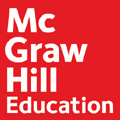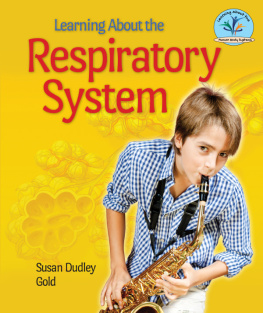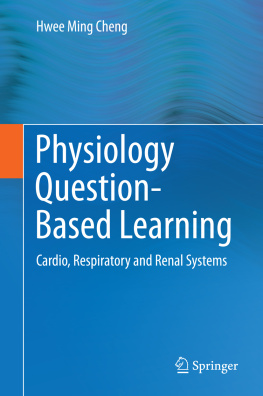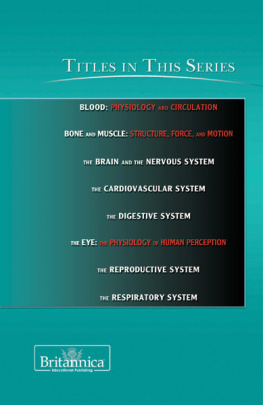

Copyright 2013 by McGraw-Hill Education. All rights reserved. Except as permitted under the United States Copyright Act of 1976, no part of this publication may be reproduced or distributed in any form or by any means, or stored in a database or retrieval system, without the prior written permission of the publisher.
ISBN: 978-0-07-179314-8
MHID: 0-07-179314-3
The material in this eBook also appears in the print version of this title: ISBN: 978-0-07-179313-1, MHID: 0-07-179313-5.
All trademarks are trademarks of their respective owners. Rather than put a trademark symbol after every occurrence of a trademarked name, we use names in an editorial fashion only, and to the benefit of the trademark owner, with no intention of infringement of the trademark. Where such designations appear in this book, they have been printed with initial caps.
McGraw-Hill Education eBooks are available at special quantity discounts to use as premiums and sales promotions, or for use in corporate training programs. To contact a representative, please e-mail us at bulksales@mcgraw-hill.com.
Notice
Medicine is an ever-changing science. As new research and clinical experience broaden our knowledge, changes in treatment and drug therapy are required. The author and the publisher of this work have checked with sources believed to be reliable in their efforts to provide information that is complete and generally in accord with the standards accepted at the time of publication. However, in view of the possibility of human error or changes in medical sciences, neither the author nor the publisher nor any other party who has been involved in the preparation or publication of this work warrants that the information contained herein is in every respect accurate or complete, and they disclaim all responsibility for any errors or omissions or for the results obtained from use of the information contained in this work. Readers are encouraged to confirm the information contained herein with other sources. For example and in particular, readers are advised to check the product information sheet included in the package of each drug they plan to administer to be certain that the information contained in this work is accurate and that changes have not been made in the recommended dose or in the contraindications for administration. This recommendation is of particular importance in connection with new or infrequently used drugs.
TERMS OF USE
This is a copyrighted work and McGraw-Hill Education and its licensors reserve all rights in and to the work. Use of this work is subject to these terms. Except as permitted under the Copyright Act of 1976 and the right to store and retrieve one copy of the work, you may not decompile, disassemble, reverse engineer, reproduce, modify, create derivative works based upon, transmit, distribute, disseminate, sell, publish or sublicense the work or any part of it without McGraw-Hill Educations prior consent. You may use the work for your own noncommercial and personal use; any other use of the work is strictly prohibited. Your right to use the work may be terminated if you fail to comply with these terms.
THE WORK IS PROVIDED AS IS. McGRAW-HILL EDUCATION AND ITS LICENSORS MAKE NO GUARANTEES OR WARRANTIES AS TO THE ACCURACY, ADEQUACY OR COMPLETENESS OF OR RESULTS TO BE OBTAINED FROM USING THE WORK, INCLUDING ANY INFORMATION THAT CAN BE ACCESSED THROUGH THE WORK VIA HYPERLINK OR OTHERWISE, AND EXPRESSLY DISCLAIM ANY WARRANTY, EXPRESS OR IMPLIED, INCLUDING BUT NOT LIMITED TO IMPLIED WARRANTIES OF MERCHANTABILITY OR FITNESS FOR A PARTICULAR PURPOSE. McGraw-Hill Education and its licensors do not warrant or guarantee that the functions contained in the work will meet your requirements or that its operation will be uninterrupted or error free. Neither McGraw-Hill Education nor its licensors shall be liable to you or anyone else for any inaccuracy, error or omission, regardless of cause, in the work or for any damages resulting therefrom. McGraw-Hill Education has no responsibility for the content of any information accessed through the work. Under no circumstances shall McGraw-Hill Education and/or its licensors be liable for any indirect, incidental, special, punitive, consequential or similar damages that result from the use of or inability to use the work, even if any of them has been advised of the possibility of such damages. This limitation of liability shall apply to any claim or cause whatsoever whether such claim or cause arises in contract, tort or otherwise.
Contents
Testing for Nonuniform Distribution of Inspired Gas and
Pulmonary Blood Flow
Preface
The eighth edition of Pulmonary Physiology has been thoroughly updated. Several new figures have been added and others revised to help students visualize concepts more clearly and learn the material more effectively. New references and clinical correlations have been added to the end of each chapter. It has been more than 30 years since Pulmonary Physiology was first published. The book is now older than most of the students reading it!
Perhaps the greatest pleasure associated with the first seven editions has been receiving the many favorable comments and helpful suggestions from students, readers, and colleagues, and I have used many of these suggestions in the preparation of this new edition.
This book is intended to be used both as an introductory text for beginning students and as a review for residents and fellows in such fields as internal medicine, anesthesiology, pediatrics, and pulmonary medicine. Students who have studied the text should be able to review for licensure and certification examinations by concentrating on the figures, key concepts, tables, and appendices, which summarize nearly all of the material in the book.
My goal in writing this book is to provide first-year medical students (as well as respiratory therapy, nursing, nurse-anesthesia, and other students) with a solid background on the aspects of pulmonary physiology essential for an understanding of clinical medicine. My approach is to encourage self-sufficiency not only in studying pulmonary physiology for the first time but also in understanding the basic concepts of pulmonary physiology well enough to apply them with confidence to future patients.
I believe that the ways to accomplish this are to inform the reader of the goals of each chapter with clearly stated learning objectives, to give detailed and complete explanations of physiologic mechanisms and demonstrate how they apply to pathologic states, and to give the reader a means of self-testing by providing clinical correlations, problems, and pulmonary function test data to interpret.
The challenge is to write a book that students can read without difficulty in the limited amount of time allocated to pulmonary physiology in the typical curriculum. The material must be presented in a way that discourages memorization without real comprehension, because only those students who understand the basic mechanisms are able to apply them to new situations. The result of this approach should be a book that covers the essentials of the respiratory system as concisely as possible yet raises no questions in students minds without answering them. I hope that I have achieved these goals in writing this book.
I would like to thank the many people whose comments have helped me revise the various editions of the book, including my colleagues in respiratory physiology and pulmonary medicine, my colleagues at LSU Health Sciences Center and Tulane University School of Medicine, as well as my students and readers. For this edition I give special thanks to Drs. Andy Pellett and Lisa Harrison-Bernard of Louisiana State University Health Sciences Center and Hershel Raff of the Medical College of Wisconsin. I would also like to thank everyone who has helped me prepare the manuscripts, illustrations, and proofs including my many editors at McGraw-Hill. For this edition, I would especially like to thank Betsy Giaimo, and my wife Elizabeth. This book is dedicated to the memory of Robert S. Alexander and of Jim Miller.
Next page






